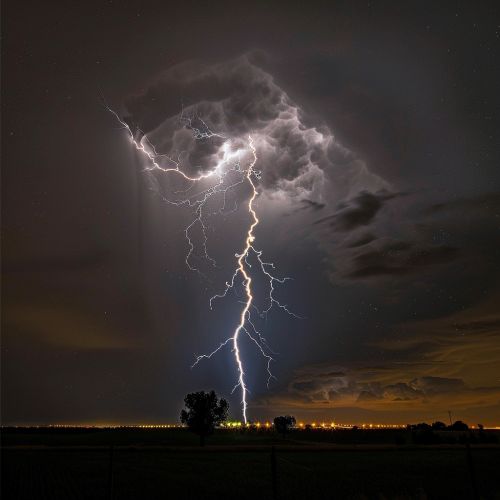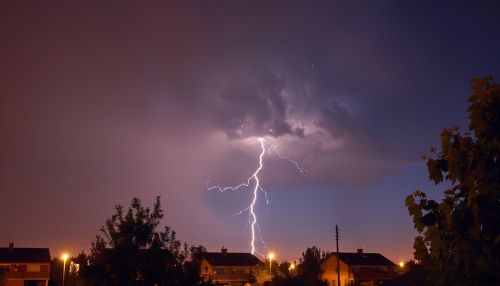Thunderbolt
Overview
A Thunderbolt is a natural phenomenon characterized by a flash of lightning accompanied by a simultaneous crack of thunder. This atmospheric electrical discharge is typically associated with thunderstorms, but can also occur during volcanic eruptions or dust storms. The term "thunderbolt" is often used in a metaphorical context to denote sudden and unexpected events.
Physics of Thunderbolts
The physics of thunderbolts is a complex field of study, involving the principles of electromagnetism, thermodynamics, and fluid dynamics. When a lightning bolt travels through the air, it heats the surrounding air to temperatures of approximately 30,000 Kelvin, causing it to rapidly expand and create a shock wave that is heard as thunder.
Lightning Formation
Lightning, the visual component of a thunderbolt, is formed through a process known as electrostatic discharge. This occurs when there is a buildup of electrical energy within a cloud, which is then released in a sudden, powerful burst. The exact mechanisms behind this buildup and release are still a subject of ongoing research, but it is generally agreed that it involves the movement and interaction of charged particles within the cloud.
Thunder Formation
The audible component of a thunderbolt, thunder, is created by the rapid expansion and contraction of air around the lightning bolt. The intense heat of the lightning causes the surrounding air to expand rapidly, creating a shock wave that travels through the air as a sound wave. This sound wave is what we perceive as thunder. The delay between the flash of lightning and the sound of thunder is due to the difference in speed between light and sound.
Historical and Cultural Significance
Thunderbolts have held a significant place in human culture and mythology throughout history. In many ancient cultures, thunderbolts were seen as symbols of divine power and wrath, often associated with gods of thunder and lightning such as Zeus in Greek mythology, Thor in Norse mythology, and Indra in Hindu mythology.
In modern times, the thunderbolt has been used as a symbol in various contexts, from military insignia to corporate logos. It continues to be a subject of fascination and study, with scientists seeking to understand its complex physical properties and its role in the Earth's climate system.
Safety and Protection
Due to their powerful and unpredictable nature, thunderbolts pose a significant risk to life and property. Various measures can be taken to mitigate these risks, including the use of lightning rods and other forms of lightning protection systems. These systems work by providing a path of least resistance for the lightning to follow, directing it safely into the ground and away from structures.
See Also


